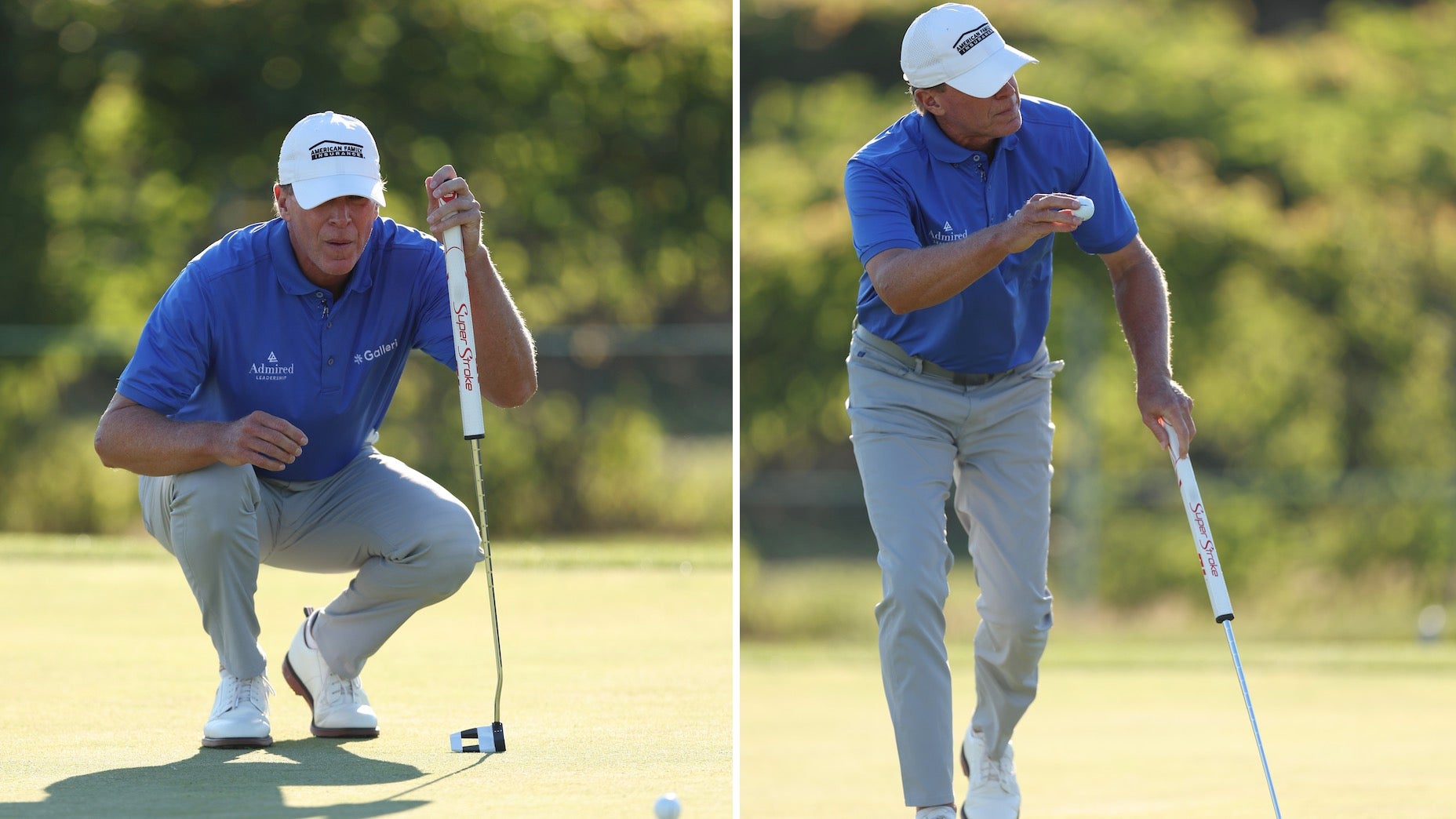Why the red dots on Tiger Woods’ iconic putter are important

Tiger Woods' putter has battle scars from years of use, but the red paint still remains.
Andrew Tursky
Over the past 21 years, we’ve all gotten to know Tiger Woods’ Scotty Cameron Newport 2 GSS putter. The Anser-style blade has been along for the ride on 14 occasions when Woods won a major title — the only exception coming in 1997 when Woods lapped the field at the Masters with a Newport Teryllium. It’s arguably the most famous club in the history of the pro game.
The putter is impossible to miss in Woods’ hands, the red “cherry bombs on the heel of the face and cavity,” as Scotty Cameron affectionately calls them, acting as a calling card for the famous wand. It’s a look Cameron has incorporated into his retail putters over the years that initially came to fruition back in 1999 when the craftsman was attempting to put the finishing touches on the original version of Woods’ putter.
Struggles with the flat stick earlier in the season had led Woods to ask Cameron for a Newport head with a sharper profile — all the way to the squared-off heel-toe bumpers affixed to the flange. The putter would come to be known as “Newport 2.”
With the German Stainless Steel (GSS) head material providing a distinctively softer feel at impact, Cameron believed the putter was good to ship to Woods, who was expecting it when he touched down in down Dallas for the then-GTE Byron Nelson Classic.
There was just one problem: the putter was still too heavy for Woods’ liking by two swing-weight points (roughly 4 grams). It’s a weight difference the average golfer couldn’t detect. Woods, on the other hand, would be able to pick up on the change right away.
Cameron needed a quick fix, so he milled two dots — one in the back cavity and another in the heel — to drop the swing weight just enough to hit Woods’ weight number. An iridescent red paint was then applied to each dot to make the putter pop. The putter was ready for the big show.

Woods would go on to shoot an opening-round 61 on the Cottonwood Valley Course with the putter in the bag, which remains his lowest round to date on the PGA Tour. Later that year, he’d win the PGA Championship at Medinah with the putter, beginning a run of 13 major titles with it in 10 years, including the “Tiger Slam.”
In recent years, the “cherry bombs” have become one of Cameron’s most well known designs. They give each retail putter an unmistakable look, but when it comes to Woods’ putter, their purpose is two-fold. It provides the 15-time major winner a feel he’s come to trust, and a can’t-miss appearance.
The combination has worked out better than Woods could have ever imagined over his career.












